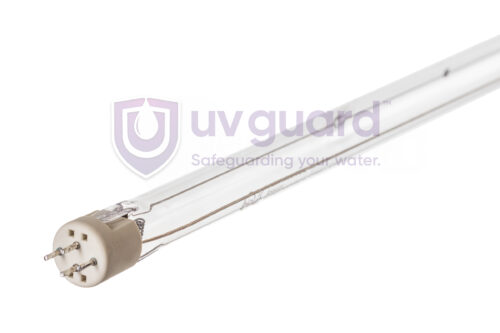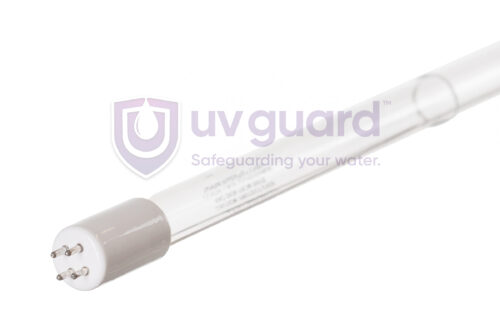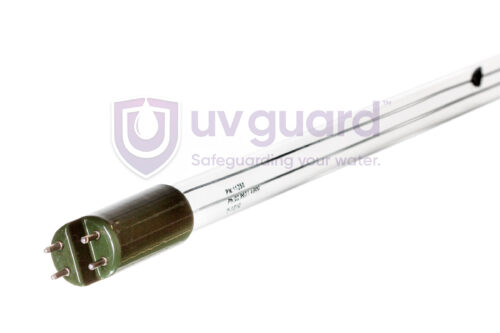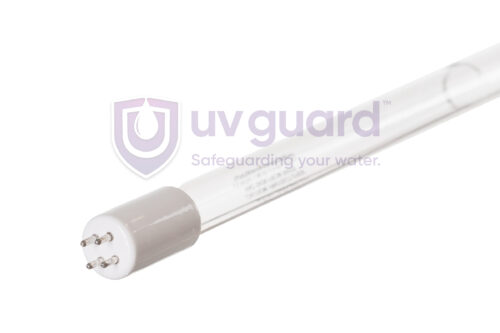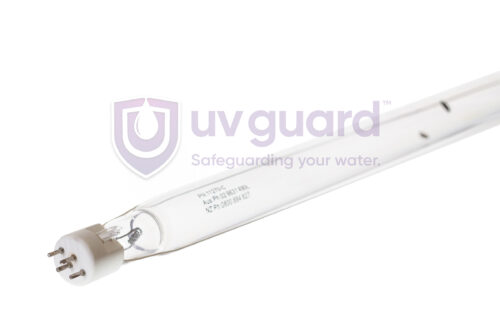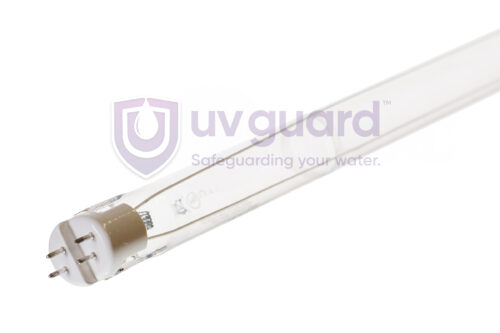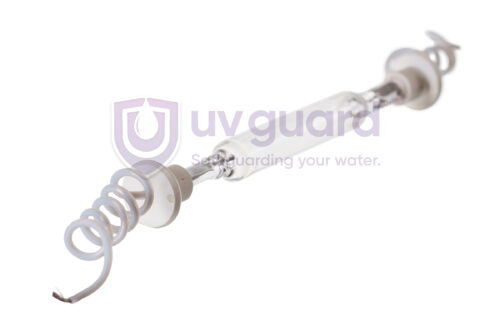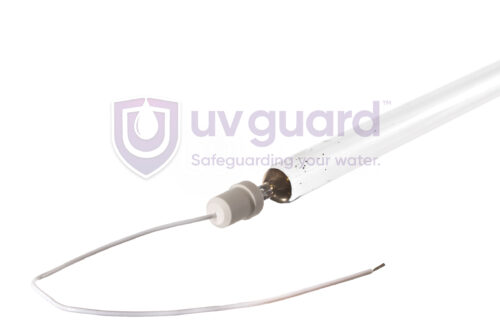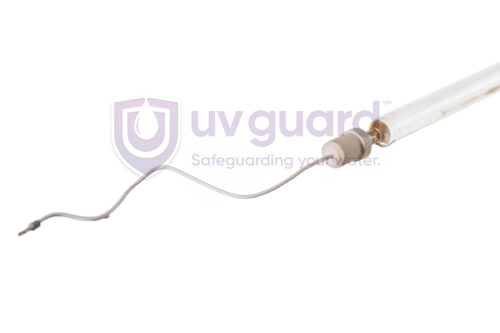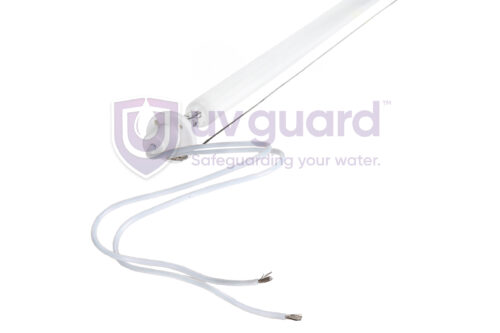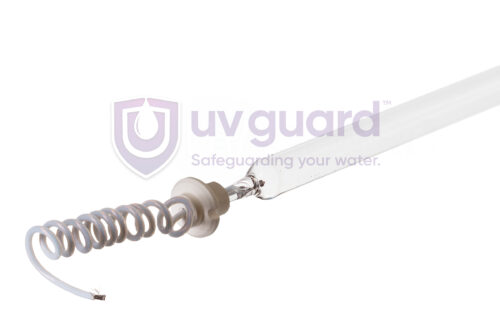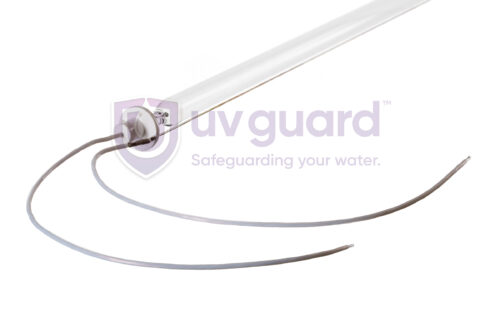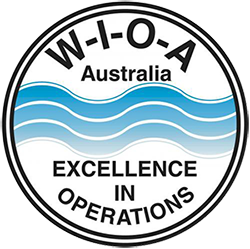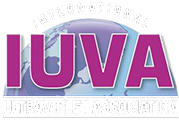UV Lamps
Enjoying your efficient, eco-friendly UV water disinfection system but wondering about replacing its lamp?
We have the most extensive range of residential and commercial UV lamps for water treatment systems in Australia!
What Is a UV Lamp?
A UV lamp (also called a UV light bulb) is used within a UV water treatment system. These ultraviolet lamps emit light in the UV-C spectrum that penetrates harmful microorganisms (like bacteria and viruses) in water and damages their DNA. This damage prevents the microorganisms from replicating and causing infection and illness.
Why should you choose this water disinfection method?
- There’s no need for chemicals, as the germicidal UV lamp does all the work to clear the water of bacteria through its ultraviolet light waves.
- It’s environmentally friendly thanks to not using harmful chemicals, and, in turn, you avoid dealing with chemical residues and byproducts.
- The water’s taste and smell aren’t altered.
- It’s safe; the UV light bulb is fitted within a case to protect you from exposure.
It’s important to note that an ultraviolet lamp will not rid water of particles without another filtration method. Germicidal UV lamps are for destroying living organisms and bacteria, not filtering out small particles like sediment, dirt, minerals, and heavy metals.
Why Choose UV Guard’s UV Lamps?
At UV Guard, we have a comprehensive range of germicidal UV lamps for residential, commercial, and industrial applications.
But don’t worry; we won’t just leave you with a replacement UV light bulb and no guidance! We offer expert technical support and servicing for our UV disinfection systems. These services include maintenance, annual UV lamp replacement, quartz sleeve cleaning, and more complex electrical works and repairs.
All our products are made of the highest quality to guarantee safety and reliability. We’re Australian WaterMark certified, meaning we’ve undergone rigorous testing and meet the required national plumbing and drainage standards.
Now you’re convinced to choose our UV lamps for water treatment systems, let’s explore them in detail!
Low Pressure (LP) UV Lamps
Low pressure (LP) UV lamps suit applications with lower flow rates and longer exposure time, such as residential water systems, small-scale water treatment plants, and certain industrial processes where water is not rapidly flowing.
These lamps operate at low currents, typically from 180 to 425 mA (milliampere), and their power varies between 10W and 40W (watts).
We have UV Lamp 11010, UV Lamp 11018, and UV Lamp 11020 available in this category.
Low Pressure High Output (LPHO) UV Lamps
Operating between 600 and 800 mA, the output of our Low Pressure High Output (LPHO) UV lamps is approximately double that of standard low pressure lamps.
This higher performance makes them well-suited for larger water flow rates and higher required UV doses, such as in municipal water treatment facilities, large-scale industrial water processes, and extensive aquaculture systems.
Amalgam UV Lamps
Amalgam is an alloy, and spots or pellets made of this absorb and release mercury, maintaining optimal vapour pressure and consistent UV output in UV lamps.
Our amalgam lamps are ideal for high-intensity UV radiation water treatment of municipal drinking water, sewage treatment plants, air-conditioning systems, and industrial exhaust air treatment.
They have higher currents of 1 to 10A (ampere) and their power ranges from 120W to 1000W.
Medium Pressure (MP) UV Lamps
Medium Pressure (MP) UV lamps are known for dispensing large UV doses at high peak flow rates.
Our MP UV lamps have many applications, including disinfecting water and air, breaking down pollutants through oxidation, curing materials like inks and coatings, and facilitating various chemical processes. As these lamps produce multiple wavelengths (polychromatic), they’re also more effective at reducing chloramines in swimming pools.
FAQs About UV Lamps
Secure Your Water Quality with UV Guard’s UV Lamps
If you have a UV Guard water disinfection system, there will come a time to replace the UV lamp so you can continue to enjoy clean, pure water.
We’re committed to providing sustainable, chemical-free water purification for your family and business; that’s why we offer high-quality replacement UV lamps and maintenance services.
With UV Guard, you can be sure all your water purification needs will always be taken care of.
Explore our range of residential and commercial UV lamps for water treatment systems today.
If you need a helping hand choosing the right one for your system, fill out this online form, and we’ll be in touch soon!
Get in touch
This website has lots about us.
But it’s your needs that matter most.
Let’s talk.
Newsletter
Stay up-to-date with our very latest news, technology, offers and events.

